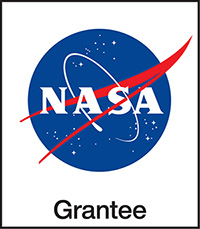Full Educator Guides
CONTEXT SETTING
ACTIVITIES
CONTEXT SETTING
ACTIVITIES
ACTIVITIES
How to Teach These Units
Take a little time to prepare and get ready to teach. The pages linked below give you an easy-to-follow checklist and resources that get you prepared for facilitating PLANETS activities.
3. Red Planet Places: Exploring Landforms on Mars
Learners examine images of landforms on Mars and Earth to find evidence of past water.
Guiding Question
How can landforms help us choose a landing site on Mars?
 Activity Timing
Activity Timing
10 MIN. Get Ready & Team Up
20 MIN. Search for Evidence of Water
15 MIN. Reflect
45 MIN. TOTAL
Setup: Prep Time 60 min
- Print resources.
*See Materials & Preparation in the Educator Guide linked above for full info.
21st Century Skills
- Critical Thinking
Science Practices
- Analyzing & Interpreting Data
Learners Will Do
- Recognize landforms on Mars that provide evidence of past water.
Learners Will Know
- Scientists examine landforms to learn about the past history and climate of a location.
Connecting Across Activities
- Activity 2: Introducing Landforms: Last time, learners generated questions about Mars and explored how wind and water can make landforms on a planet’s surface using models.
- Activity 3: Exploring Landforms on Mars: Today, learners act as scientists to examine images of landforms on Mars. These images are the first set of data they will use to choose a landing site.
- Activity 4: Introducing Topography: Next time, they will deepen their understanding of landforms by considering topography.
Level Up!
- Although this activity lists two possible landing sites, if you have time, the activity is more interesting and enriching with four choices. See the educator guide for the additional landing site data and directions.
- If you are using the advanced version of this pathway with four possible landing sites, use the advanced version of the Science Activity 3 Landforms on Mars Data Packet with Level Up (PDF) and add columns titled “Nili Fossae” and “Iani Chaos” to the Our Ideas poster.
- Tell learners that the Viking landers had landing ellipses more than 100 km long, but improvements in science and engineering have shrunk the uncertainty of Mars landings down to within just a few kilometers. Future missions may be able to land with pinpoint accuracy.
- Have learners find out more about NASA science missions here. For information about Mars missions in particular, check here.


